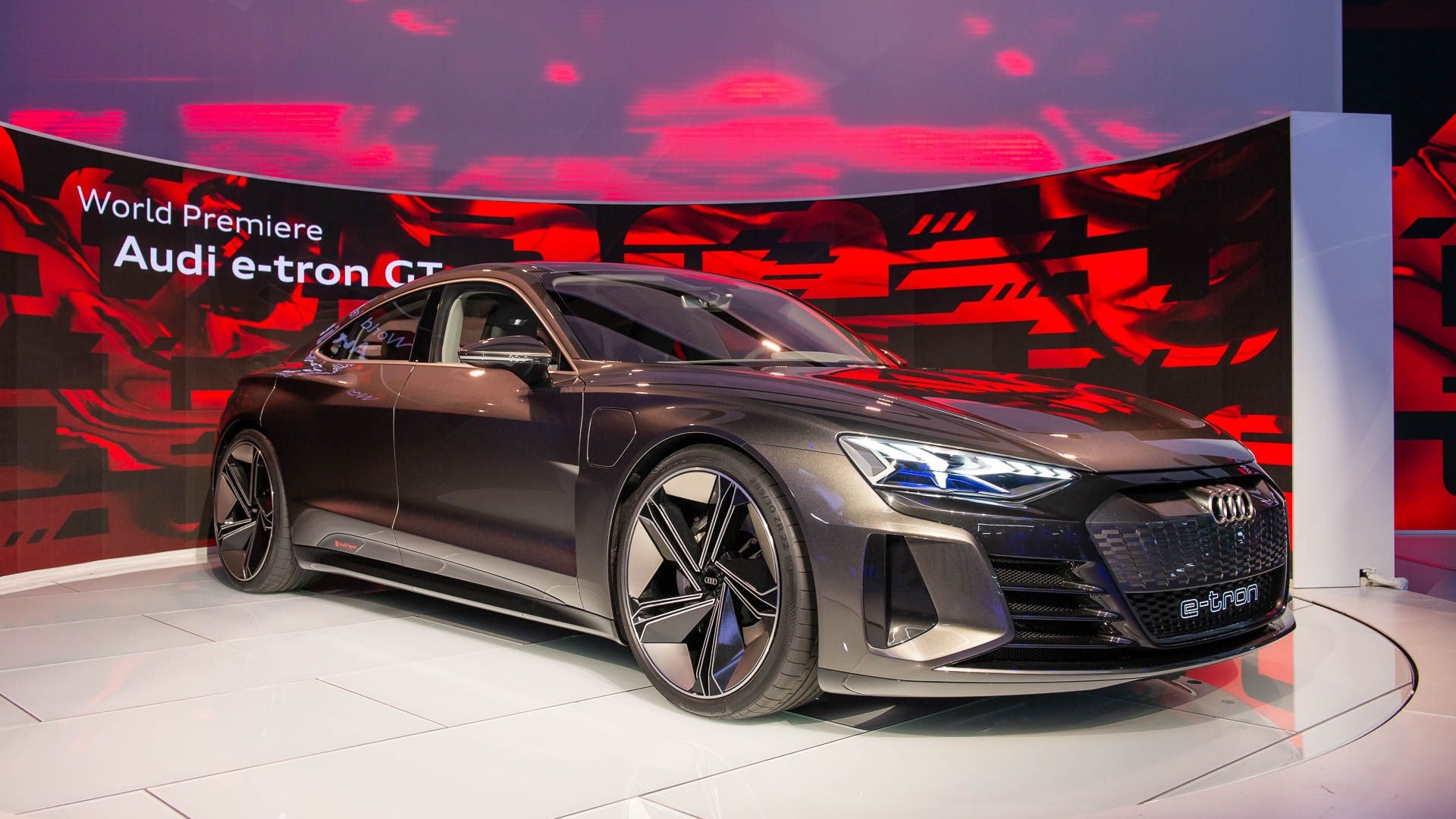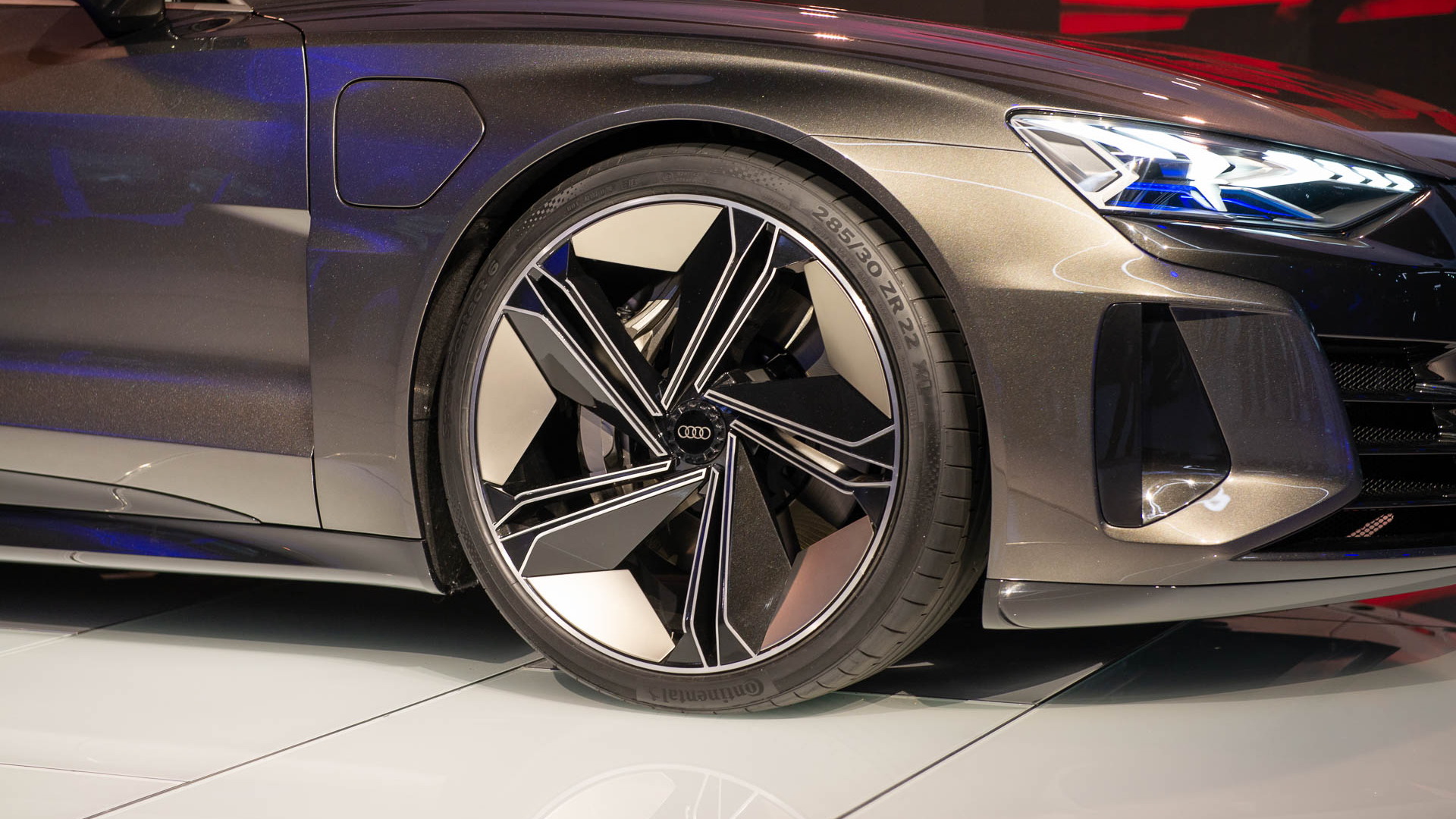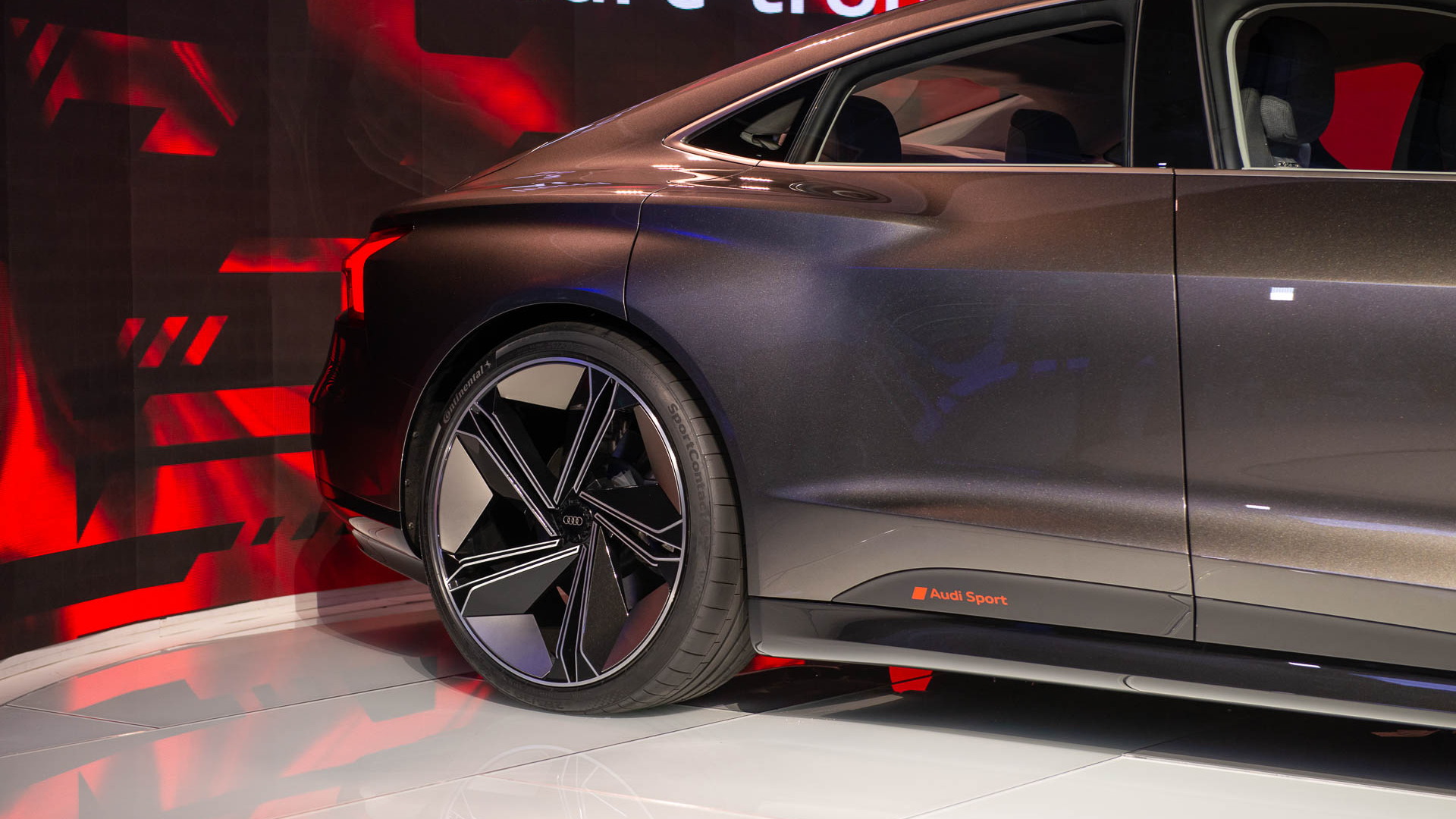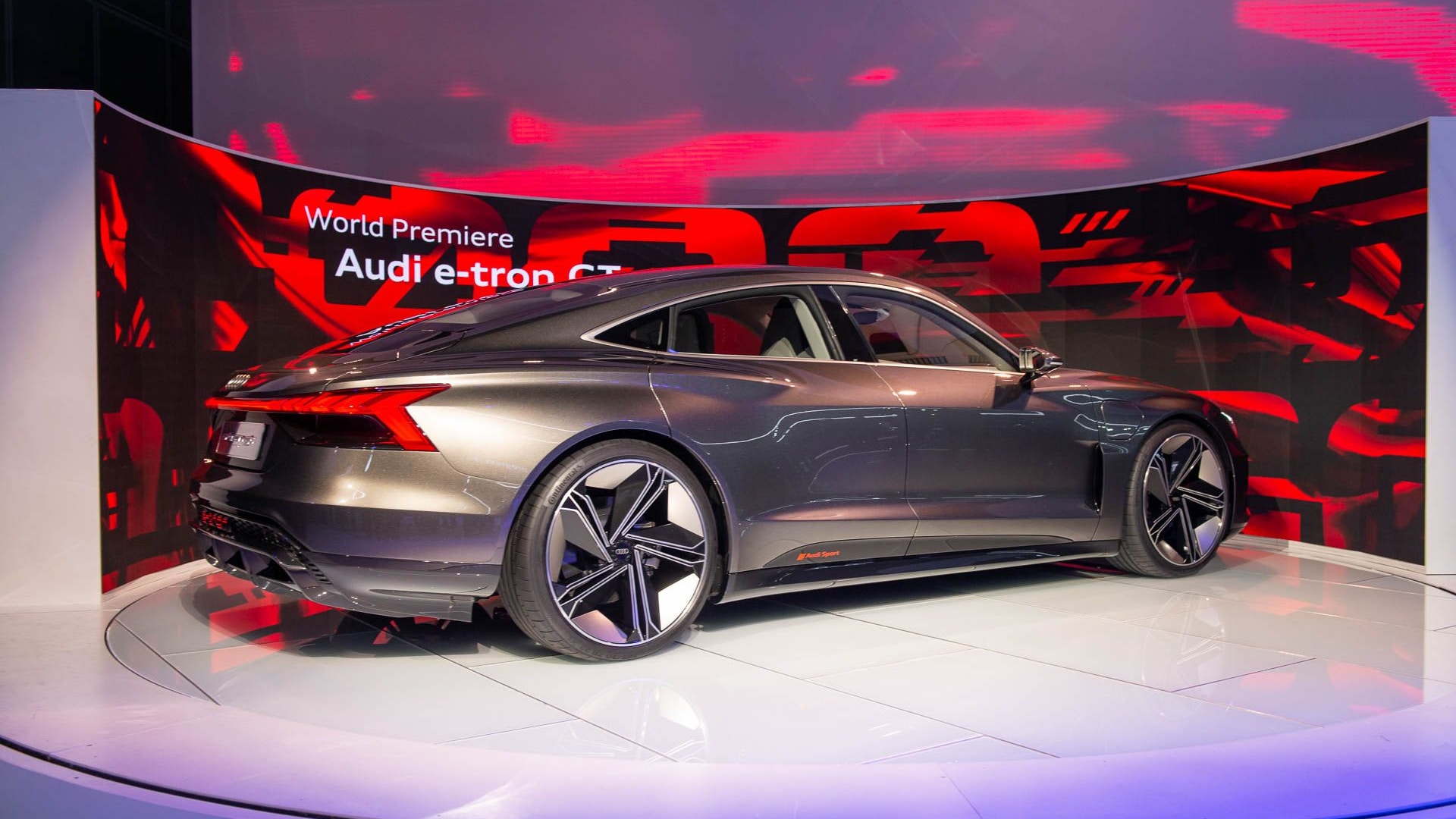The four-door e-Tron GT concept that Audi introduced Wednesday at the 2018 LA Auto Show is “very, very, very, very, very close to production.”
Those are the words of Audi design boss Marc Lichte, not ours.
The design study will earn the distinction of being the first battery-powered Audi Sport model when it makes its debut as a production car in 2020.
Two years is an unusually short amount of time to turn a concept into a car the general public can buy, especially when new technology enters the equation, but Audi isn’t the least bit worried. The GT’s body is nearly done, pre-production has already started, and the major components that make up the electric drivetrain all come from the 2020 Porsche Taycan.
DON’T MISS: Report: Audi e-tron GT electric sport coupe will fast-charge in 12 minutes
While Porsche has already highlighted the Taycan’s race car-like trackability, Audi sees the e-tron GT as a modern-day, zero-emissions grand tourer. “It’s an everyday sports car with a focus on driving long distances,” explained Andreas Mindt, the firm’s head of exterior design.
The two cars share everything under the sheet metal, including a 96-kilowatt-hour lithium-ion battery pack and two electric motors (one over each axle), but they’re being tuned differently by two separate engineering teams. They each need to have their own character. Porsche buyers want all-out performance as the main course with a side order of luxury and technology. Audi customers seek a buffet from which they can select performance or comfort depending on their mood.
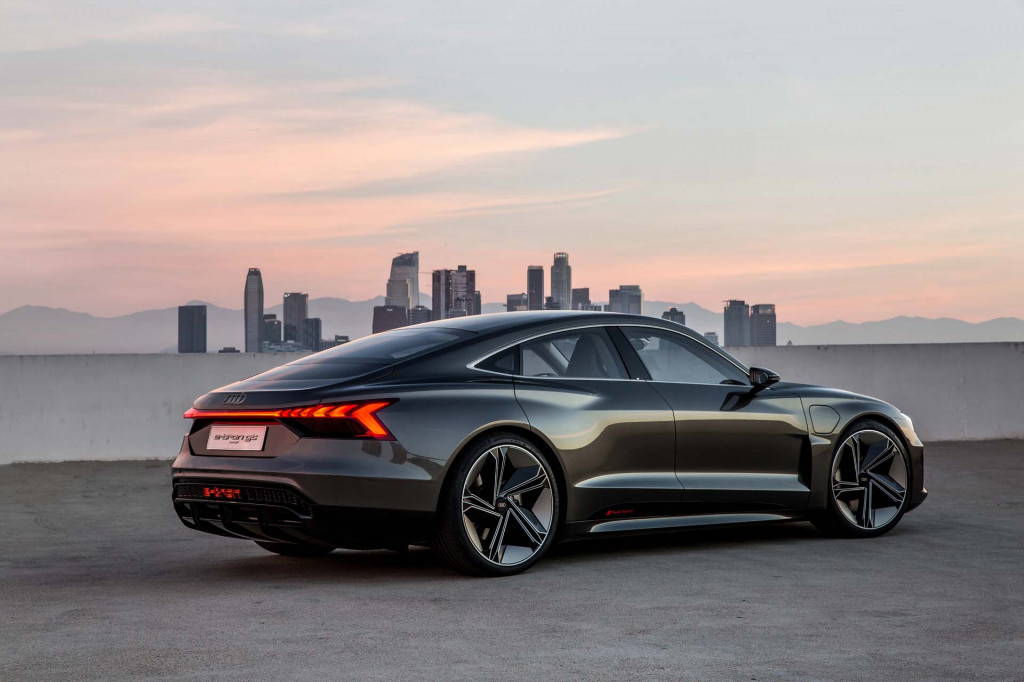
Audi e-tron GT concept
But even the built-in comfort mode will be performance-flavored. The 590-horsepower drivetrain silently pelts the e-tron GT from zero to 62 mph in 3.5 seconds, and from zero to 124 mph in 12 seconds flat. The car’s cooling system will let speed aficionados put Audi’s claimed acceleration to the test over and over again without frantically sending the powertrain into limp mode to preserve the battery pack.
“There is a big myth about the design of an electric car. Some believe that they don’t need cooling. That’s not true; all of the elements here are cooled. The battery, the motors, and all of the charging elements,” Mindt explained. “There is a lot of cooling required. It’s very important.”
CHECK OUT: 2018 LA auto show preview: 10 green-vehicle intros that matter
The battery pack holds enough electricity to deliver up to 250 miles of driving range, at least according to Europe’s fabulously-optimistic WLTP testing cycle, and the production e-tron GT will be compatible with the super-fast 800-volt charging system that the Taycan will inaugurate when it goes on sale in late 2019 in Europe (with deliveries to the U.S. in 2020).
By charging at up to 350 kw, the system will provide an 80-percent charge in under 20 minutes, just like it does in the Porsche; the two technologies are identical in every aspect.
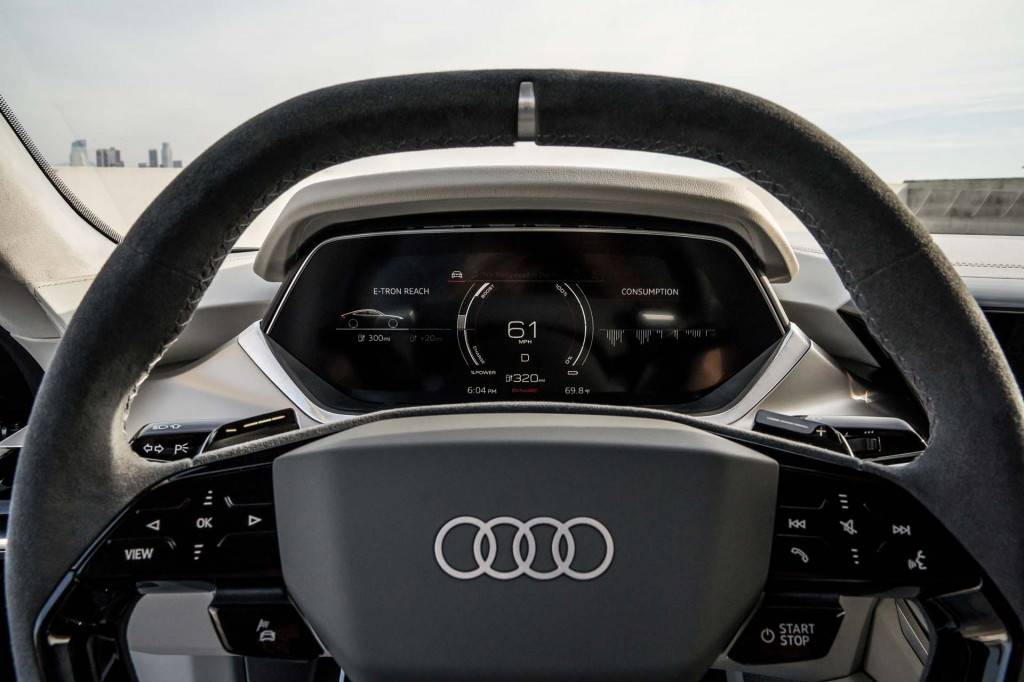
Audi e-tron GT concept
Audi doesn’t expect the e-tron GT’s battery pack will take high-power charging on a daily basis, though. Most owners will charge the car from the comfort of their own home.
The wireless inductive charging technology that the brand will release on an as-of-yet-identified production car in the near future will make the process much more convenient. It will deliver about 11 kW, which is fast enough for a full charge for a motorist who parks the car in a garage at 7 p.m. and doesn’t plan on touching it until 7 a.m. the next morning. Standard charging via a cable will be available, too.

Audi e-tron GT concept
Mindt pointed out his team chose to integrate the charging ports into the space between the front wheel arches and the front doors for convenience reasons. “In the Audi A3 e-tron, we put the charging port in the front; you might remember that users had to slide the Audi logo to one side to access it. The trouble is sometimes there is a wall there. That’s why we moved it to the side of the car,” he told us.
Engineers could have placed the plug somewhere on the back half of the car, where the fuel cap is on a gasoline- or diesel-powered model, but they decided to move it up because most drivers park nose-first. Mindt added the debate around the best place for the charging port is part of an ongoing, industry-wide discussion. “It’s not easy to place it [behind the front wheels] because there’s a structural part in the way,” Mindt said.
READ MORE: Audi to expand plug-in hybrid range alongside e-tron electric
To underscore the importance of sustainability, Audi asked its designers to create an interior that’s 100 percent vegan. The upholstery on the seats is woven with recycled fibers, the leather on the dashboard is synthetic, and the firm retrieved fishing nets floating around the ocean to make the floor mats. Audi will give e-tron GT buyers the possibility of ordering a vegan interior like the concept’s, though Enzo Rothfuss, Audi’s head of interior design, predicted luxury car customers will continue to ask for so-called classic materials such as leather and wood in the foreseeable future.
The e-tron GT will reach American showrooms in early 2021, meaning it might not arrive until the 2022 model year. Audi won’t release the final set of specifications and key details like pricing until 2020 at the earliest. The GT might overlap with the upcoming second-generation RS 7 in some areas, including straight-line performance, but Audi Sport isn’t worried about creating internal competition.
“They’re different customers,” Lichte pointed out. “This is electric; the RS 7 uses a combustion engine. We will offer both families in parallel for a long time.”
—by Ronan Glon, for Internet Brands Automotive
--
Porsche provided travel and lodging to Internet Brands Automotive to bring you this firsthand report.


